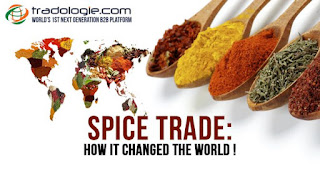The Spice Trade: 5 Facts You Should Know

The spice trade has been around since ancient times, but it’s not a thing of the past just yet. In fact, thanks to the Internet, it’s more accessible than ever before! That’s why we thought it would be helpful to compile five important facts you should know about Spice Trade India in case you are thinking about joining the lucrative market! What is the spice trade? Despite popular myth, spices do not add flavor to food—rather, they simply allow us to taste food as it really is. Spices also have other properties that make them particularly attractive in trade. With few exceptions, such as nutmeg or saffron, they can be grown around the world and are far more concentrated than herbs. So while they may be worth less per weight than gold or silver, they’re worth more on a volume basis. Today, there is a very brisk bulk spice trade online between farmers in countries like India and exporters like California-based Frontier Natural Products Co-op. Here are five facts you should know about S...






